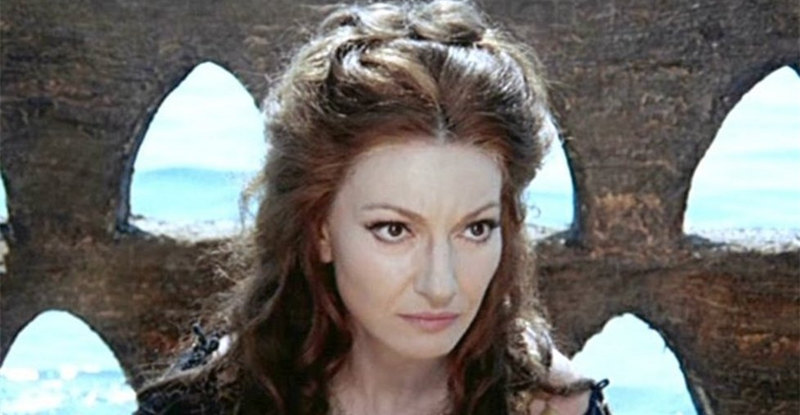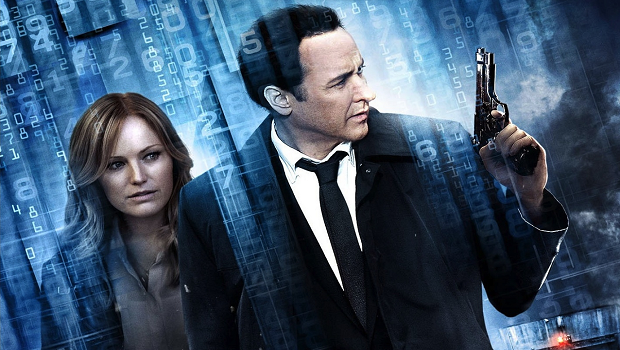Margaret Thatcher’s place in history is secure. With 11.5 years in office, her time as Britain’s prime minister was the longest of the 20th century. She’s also the only woman ever to hold the position, and, as this documentary points out, she involved herself in hosting talks between U.S. president Ronald Reagan and Soviet Union leader Mikhail Gorbachev, so that, whether she took an active role or not, she’s perceived as being a part of that key moment in history when the Soviet Union was dissolved.
Like Thatcher herself, this is a no-nonsense documentary. There’s no musical backdrop or transitions, and no fancy editing—just talking heads and vintage clips, with the clips outnumbering the former ministers, classmates, journalists, and political scientists 2 to 1. We see Thatcher in extended footage from the beginning of her political career until the interview she gave after she was forced out of office. There are clips of her giving speeches, facing off against the opposition in Parliament, responding to reporters’ questions, and being interviewed in her home, office, and neutral locations. There’s footage of her when she was Secretary of State for Education and Science under Prime Minister Edward Heath, shots of her campaigning for and winning election as Leader of the Opposition in 1975, her winning prime minister in the 1979 election, with foreign dignitaries, and making statements during critical moments during her tenure: like the coal miners’ strike, the Falklands War, the Islamabad Marriott Hotel bombing she and her husband survived, and the unpopular “poll tax” that was the last straw for Brits who had become increasingly unhappy with her leadership.
Watching this 90-minute video you begin to get a sense of déja vu, because if you close your eyes and mentally block out the phrase “Margaret Thatcher,” it could be describing any number of hard-line conservative leaders—people like Ronald Reagan, who was a friend of Thatcher’s, or either of the Bushes, Benjamin Netanyahu, Nicolas Sarkozy, or even Mahmoud Ahmadinejad. The traits are the same, and they’re described and illustrated here: a tough, hard-line approach (especially in respect to international relations), an emphasis on nationalism, ultra-conservative politics and policies, a predilection towards business and the rich, a highly developed sense of idealism, and an instinctual reliance on self rather than advisers. As one of the journalists in this film points out, the very things that were perceived as strengths, at first, in the end turned out to be weaknesses that finally led to her removal from office.
“She got along very badly with the leaders of Europe,” one of the journalists says, while another, clearly an admirer who thinks Thatcher’s legacy is mostly a positive one, nonetheless admits that “towards the end of her time, she did become more authoritarian. Everybody had to do what she said. You were forced to.” She didn’t listen to her ministers, Lord Heseltine says, and if any of them spoke his mind, he was removed. “No one could control her,” another journalist says, and she was unwilling to meet with deputy ministers or even hear them out, according to Lord Howe. The last straw was a poll tax that Thatcher, who had spoken derisively against taxation for most of her political career, euphemistically called “a community charge.” When riots broke out over the proposed tax, she dismissed them. “These people are totally against democracy,” we see her say on-camera.
Eventually, her own party conspired against her, sensing the need to remove her and go with a successor who would engender a more “open” society, rather than the secretive one she often operated—at least that’s the feeling we get from this film. And it stands to reason that when there’s no discussion or dissent permitted, there’s no sense of openness.
So how did Thatcher last 11-and-a-half years?
She was the right person at the right time for Great Britain, a number of experts say. “People felt Margaret Thatcher gave them the smack of firm government,” and that was what people wanted at the time. Her dominant trait? Fearlessness, this film concludes. “She also had good looks and charm, and she wasn’t afraid to use either of them.” There was something striking about this woman who, “once she made up her mind, she just ‘got on with it.’” It’s why a Soviet journalist bestowed the nickname “the Iron Lady of the western world” on her.
Of course, not everyone embraced her. Francois Mitterrand was said to have remarked, “She has the eyes of Caligula and the mouth of Marilyn Monroe.” As education secretary the staunch conservative abolished free milk in schools. She saw the country as divided, we’re told, but she got into politics because she thought that Britain’s glory had faded and she wanted to restore some measure of it. She felt that unions were largely responsible for the decline of the Empire and deliberately sought to break the unions and “rooted out socialism within the system,” we’re told (and shown through copious film clips).
This documentary does a decent job of capturing the arc of Thatcher’s career—something that the film, “The Iron Lady,” didn’t do—in a narrative that isn’t whitewashed or damning. There are things Thatcher does here that seem praiseworthy, and things that seem—there’s no other way to put it—very, very wrongheaded. And the various talking heads get the chance to say as much.
At 85, Thatcher is still alive, though this documentary stops when she leaves office—unlike the film “The Iron Lady,” which delves into a life long past her years of public service, with implications of senility. Toward the end of this documentary, Meryl Streep and “The Iron Lady” director Phyllida Lloyd make an appearance, but that’s the only tie-in to the 2011 film. Is it worthwhile? For students of history, yes. And for viewers who wanted more abut Thatcher’s career than the film offered, it’s also of interest.
Video:
As you might expect for a documentary of this nature, the video quality varies considerably, depending on the year and the quality of the source materials. Since two-thirds of the film are composed of color vintage clips, it’s all a little rough-looking. The talking heads are much clearer and crisper, but still showing the limitations of standard definition. The film by Alan Byron is presented in 16×9 aspect ratio, which means that some of the archival material is stretched to fit the screen. Even so, there’s not much edge distortion. I’m giving this a 7 out of 10 in recognition of the fact that we’re dealing with archival materials, mostly.
Audio:
“Margaret Thatcher: The Iron Lady” is listed as English Dolby Digital 2.0 Stereo, but because most of it is dialogue—or rather, monologue—it feels more like Mono. Call it functional.
Extras:
Aside from a 1987 “election special”—Thatcher was forced out of office in 1990—there are no bonus materials. This feels mainly like footage that was assembled but, ultimately, not included.
Bottom line:
The strengths of this documentary are the sheer number of clips that are shown, which are proof enough of any theorem without the need of any experts or people who knew Thatcher. The weakness is an utter lack of artistry, which makes it seem at times as if we’re watching the kind of hastily thrown-together documentary about famous people that usually follows such events as a royal wedding . . . or funeral. In the end, though, the clips and decent-enough talking heads are enough to make “Margaret Thatcher: The Iron Lady” worthwhile.


